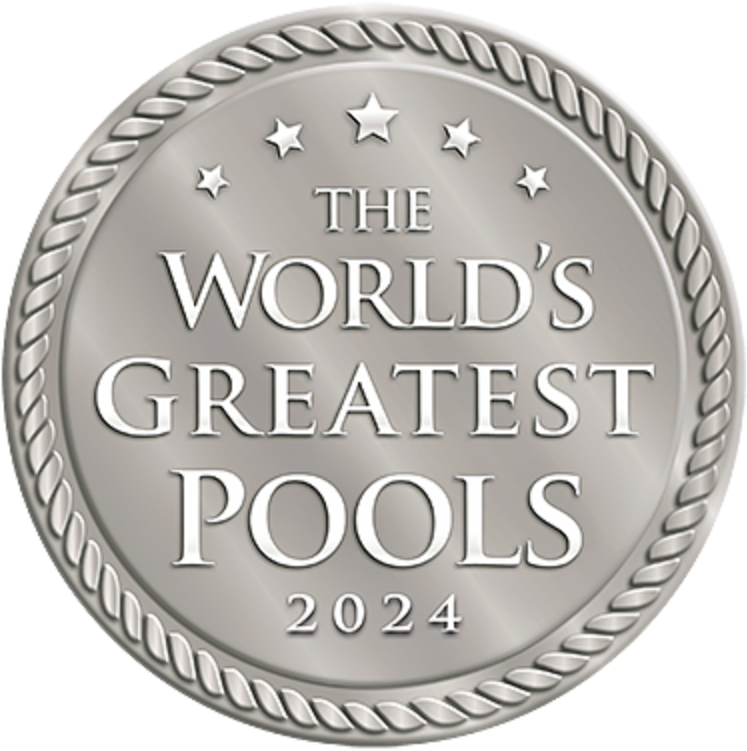In a cold plunge pool, you can expect a temperature range from 50°F to 59°F (10°C to 15°C). This is the ideal range for ensuring a beneficial physiological response to immersion without running the risk of hypothermia. The temperature is selected to maximize the benefits such as enhanced circulation and muscle recovery, while mitigating potential risks. However, slight variations can occur depending on personal preference and specific health needs. Stick around and uncover more about the fascinating ways cold plunges can contribute to your well-being.
Understanding Cold Plunge Pools
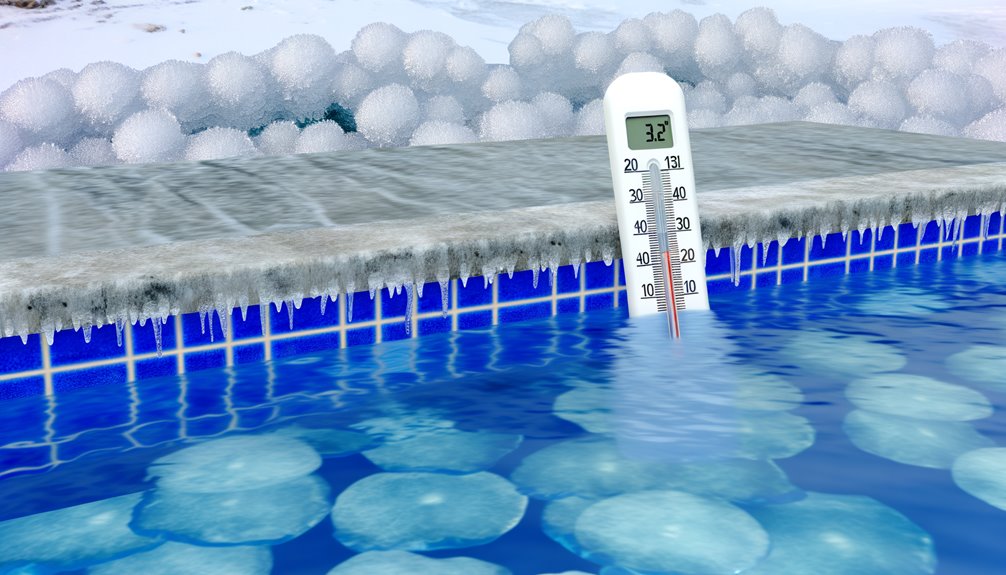
Cold plunge pools, often seen as the icy counterpart to hot tubs, demand a keen understanding.
You've likely heard of the cold plunge benefits, but do you know the science behind it? It's all about temperature variations. When you plunge into icy water, your body reacts, constricting blood vessels and accelerating your heart rate. This response enhances circulation, aids muscle recovery, and stimulates endorphins.
But remember, it's not just about how cold the water is. It's the variation from your body temperature that sparks the benefits. The greater the difference, the bigger the shock to your system, and consequently the greater the potential benefits.
However, it's important to approach cold plunges with caution, ensuring the temperature isn't too extreme.
Ideal Temperature Range
You must first understand what defines the temperature range for a cold plunge pool.
It's not just about the chill factor; the health benefits associated with these temperatures are equally significant.
Furthermore, maintaining these ideal temperatures consistently is essential for best results.
Defining Cold Plunge Temperature
While it may seem trivial to some, defining the ideal temperature range for a cold plunge pool is vital. For the novice, a cold plunge is a type of hydrotherapy that involves immersing oneself in ice-cold water.
The temperature thresholds, however, aren't arbitrary. They're based on scientific findings to provide best benefits. The ideal temperature for a cold plunge pool should be between 50 to 59 degrees Fahrenheit (10 to 15 degrees Celsius).
This range provides the necessary 'shock' to your system without causing harm. Too warm, and you won't stimulate the desired responses. Too cold, and you risk hypothermia.
Striking the right balance in temperature is essential to reaping the full benefits of cold plunges.
Health Benefits of Coldness
Having established the ideal temperature range for cold plunge pools, it's interesting to explore the health benefits associated with this degree of coldness.
- Improved Circulation: Cold exposure can boost your body's circulation, driving nutrient-rich blood to your organs.
- Mental Resilience: Embracing the cold can strengthen your mind, building mental resilience over time.
- Metabolic Efficiency: The cold can stimulate your metabolism, potentially aiding in weight loss.
- Reduced Inflammation: Cold plunge pools may help decrease swelling and inflammation.
Maintaining Ideal Pool Temperatures
In order to maintain the ideal temperature range in a cold plunge pool, it's essential to regularly monitor and adjust the water temperature.
Temperature control is key, as it allows you to keep the water between 10 and 15 degrees Celsius, the best range for cold plunge pools.
It's also important to take into account thermal insulation. A well-insulated pool retains its temperature for a longer period, reducing the energy needed to cool the water and maintaining the desired temperature.
You need to make sure the pool's structure, including the walls and floor, is adequately insulated.
Furthermore, a pool cover can be a valuable addition, further enhancing insulation and maintaining the temperature even when the pool isn't in use.
Importance of Correct Temperatures
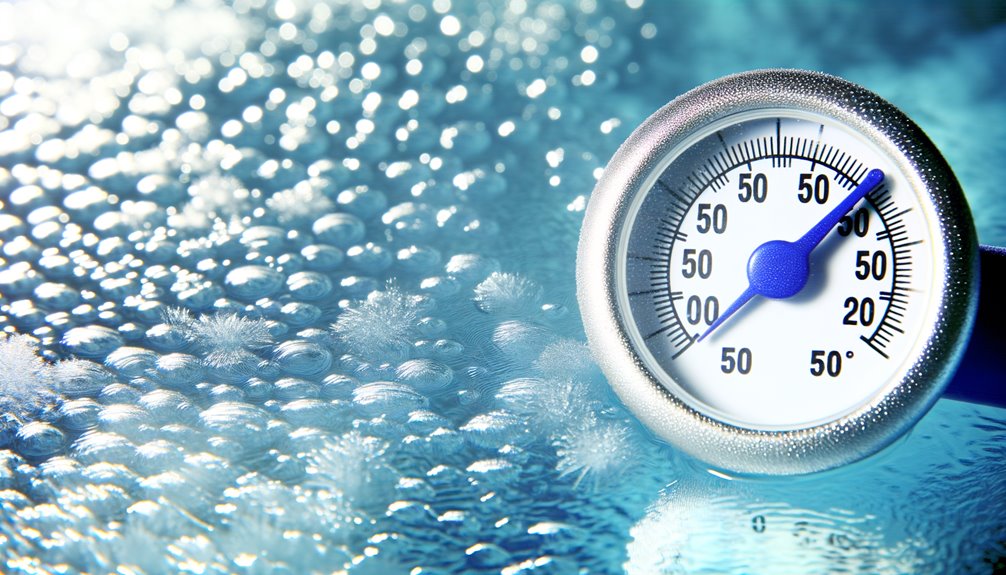
Understanding the significance of accurate temperatures in cold plunge pools is essential for your health and overall experience.
The correct temperatures not merely maximize health benefits but also dictate the ideal set up and maintenance of the pool.
Let's discuss these aspects in detail to guarantee you're getting the most out of your cold plunge pool sessions.
Health Benefits of Temperatures
While you may not realize it, maintaining the correct temperature in your cold plunge pool can greatly impact your health.
Ideal cold exposure can stimulate several biological responses through temperature adaptation.
- Boosted Immunity: Cold exposure can enhance your immune response, leading to fewer illnesses.
- Improved Circulation: The cold induces vasoconstriction, pumping blood more efficiently throughout your body.
- Increased Metabolism: Cold temperatures can stimulate brown fat production, which can increase your metabolic rate.
- Mental Clarity: The invigorating shock from the cold can enhance mental alertness and clarity.
Setting Ideal Pool Temperatures
Having considered the health benefits of temperature regulation, we now turn our attention to setting ideal pool temperatures.
It's essential to understand that temperature settings aren't a one-size-fits-all scenario. Individual plunge preferences play a significant role here.
Generally, a cold plunge pool's temperature should be between 50°F and 59°F. However, you need to gradually adjust to these temperatures. Start at a higher temperature and progressively decrease it. This allows your body to acclimate, minimizing shock and maximizing benefits.
Maintaining Consistent Pool Temperatures
To maximize the benefits of your cold plunge pool, maintaining consistent temperatures is essential. This guarantees temperature stability, a critical factor for achieving ideal health benefits.
Here are four considerations:
- Regularly monitor your pool's temperature using a reliable thermometer. This allows you to quickly identify any fluctuations.
- Employ efficient cooling mechanisms. These could be as simple as using ice or as advanced as integrated pool chillers.
- Inspect your pool for any insulation issues. Proper insulation prevents heat from entering, thereby maintaining the desired temperature.
- Maintain your cooling mechanisms routinely to guarantee their ideal performance.
Impact on Body and Mind
Even though you might initially shiver from the shock of the cold, plunging into a cold plunge pool can have substantial effects on both your body and mind.
The sudden thermal shock, while uncomfortable, triggers a rapid increase in heart rate and blood pressure, effectively jump-starting your cardiovascular system. This shock also stimulates your nervous system, leading to the release of mood-boosting chemicals like endorphins. As a result, you might notice an immediate improvement in mental clarity.
However, these effects aren't just temporary. Regular exposure to cold water can potentially enhance your body's resilience and improve your mental health.
But remember, prolonged exposure to cold can be harmful, so moderation is key.
Health Benefits of Cold Plunges
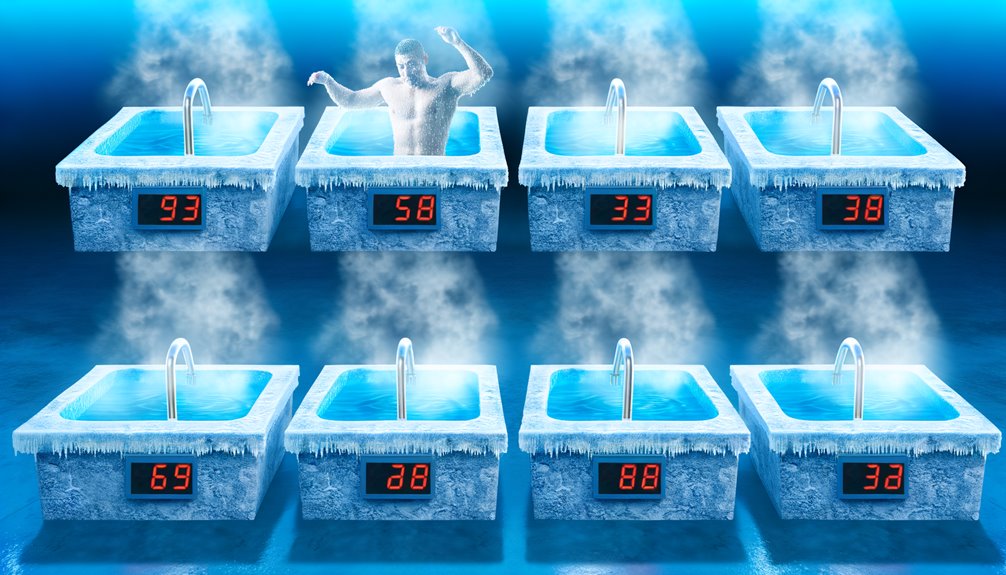
You've likely heard about the rejuvenating effects of cold plunge pools, but let's consider the science behind it.
Cold plunges offer potential health benefits such as bolstering the immune system, enhancing your mood and focus, and speeding up recovery after physical exertion.
These benefits aren't merely anecdotal; scientific studies back up each claim, providing compelling reasons for introducing cold plunges into your routine.
Boosting Immune System
While it might seem counterintuitive, taking a plunge in icy cold water can actually stimulate your immune system. This cold exposure kickstarts your body's immune response, offering a host of potential benefits.
Consider this:
- Cold plunges increase the circulation of immune cells, priming your body to fight off invaders.
- The shock of the cold triggers an increased metabolic rate, which can help burn fat and boost energy levels.
- This practice also promotes the release of endorphins, natural painkillers that can help to alleviate stress.
- Finally, regular cold exposure can create a form of stress resilience, as your body learns to quickly adapt to the cold and recover from it.
Enhancing Mood and Focus
Apart from the immune-boosting benefits, cold plunge pools can have a profound impact on your mood and focus. Scientists suggest that the shock of cold water triggers a flood of mood-enhancing neurotransmitters in your brain. This surge of chemicals can lead to an immediate mood enhancement, making you feel more positive and energized.
Furthermore, cold plunges can help improve your focus. The sudden drop in temperature forces your body to react swiftly, sharpening your mental clarity.
Regular cold plunges train your mind to stay alert under stress, leading to focus improvement. So, by incorporating a quick dip into your routine, you're not just benefiting your physical health, but your mental well-being too.
It's an icy, yet invigorating way to boost your mood and concentration.
Speeding Up Recovery
Cold plunge pools aren't just about boosting your mood and focus; they also play an essential role in speeding up recovery after intense workouts.
The cold water's effect on your body enhances muscle recovery, reduces inflammation, and improves circulation.
Here are the four stages the body undergoes when you plunge into cold water:
- Vasoconstriction: Your blood vessels constrict, pushing blood in the direction of your core.
- Deceleration: Your heart rate slows, calming your body.
- Circulation Improvement: Oxygen and nutrient-rich blood flush through your muscles, aiding recovery.
- Vasodilation: Once you're out, your blood vessels expand, delivering the benefits to your entire body.
Temperature Regulation Techniques
To maintain the cool temperatures in cold plunge pools, there are several effective techniques you can use.
For starters, temperature control is vital. You can achieve this through the use of a refrigeration system or a heat exchange system, both designed to keep the water at a constant temperature.
Additionally, regular temperature monitoring is important for maintaining the ideal conditions. You can use digital thermometers, which provide accurate readings and can be set to alert you if temperatures exceed a certain limit.
Finally, insulation plays a key role in temperature regulation. It prevents heat transfer from the surrounding environment into the pool, guaranteeing the water remains cool.
These techniques, when combined, guarantee top-notch conditions in your cold plunge pool.
Safety Measures and Precautions
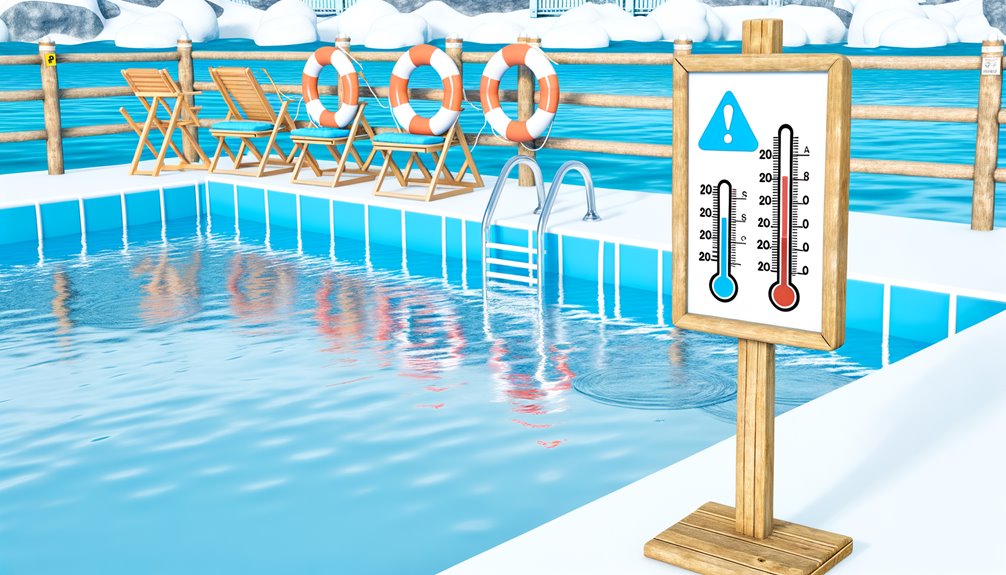
While enjoying the benefits of cold plunge pools, it's crucial to adhere to certain safety measures and precautions. These measures guarantee your safety and enhance the therapeutic benefits of the pools.
- Understand User Guidelines: Before you plunge, familiarize yourself with the user guidelines. These provide critical information on usage durations and temperature regulations.
- Emergency Procedures: Know the emergency procedures. This knowledge can be lifesaving in case of unexpected incidents.
- Supervision: Don't plunge alone. Confirm someone is within reach to help in case of unforeseen circumstances.
- Health Assessment: Consult your doctor before starting cold plunge therapy, especially if you have underlying medical conditions.
Common Misconceptions Debunked
Despite the growing popularity of cold plunge pools, several misconceptions persist, leading to confusion and misuse. You might think cold exposure is inherently dangerous, or that recovery myths are absolute truths. Let's debunk these misconceptions.
| Misconception | Fact |
|---|---|
| Cold exposure is always harmful | Moderate, controlled cold exposure can boost immune function |
| The colder the water, the better | A temperature between 10-15°C (50-59°F) is ideal, not freezing |
| Cold pools speed up muscle recovery in all cases | While they can aid recovery, individual response varies. It's not a one-size-fits-all solution |
Best Practices for Owners
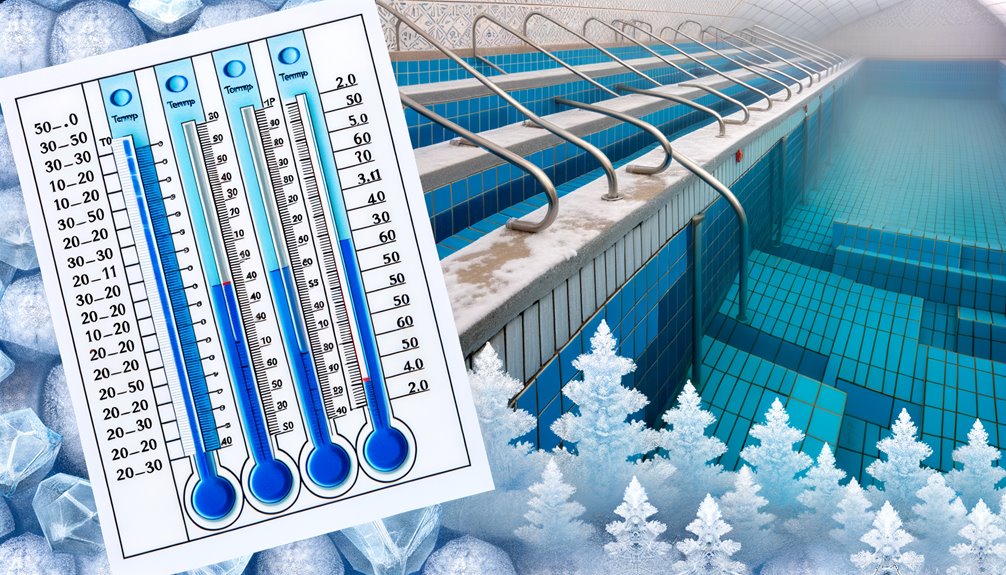
Owning a cold plunge pool, you must adapt certain best practices to guarantee maximum benefits and safety.
Your maintenance routine is essential. Here are four scientifically-backed best practices:
- Maintain a temperature between 50-59°F. This range is ideal for recovery and reducing inflammation.
- Regularly check water pH levels. Perfect readings should fall between 7.2-7.8 to prevent skin and eye irritation.
- Implement a strict cleaning routine. Regular skimming, vacuum cleaning, and filter changes secure hygienic conditions.
- Use pool covers when not in use. They reduce temperature fluctuations and prevent debris accumulation.
Adhering to these maintenance tips, you'll assure a safe and beneficial cold plunge experience.
Sharing Personal Experiences
Although you may strictly adhere to best practices, your experience with a cold plunge pool is uniquely personal.
Personal anecdotes are an essential tool for understanding the subjective nature of this experience. You might notice distinct physiological responses, such as heightened alertness or reduced muscle soreness. These shared experiences contribute to the broader understanding of cold plunge pool effects. They enrich the scientific narrative by providing real-world, human context.
However, it's important to approach these shared experiences analytically. Remember, everyone's body reacts differently to cold temperatures. Your experiences, while valid and informative, are just one piece of a larger puzzle.
Sharing personal experiences can lead to more personalized, effective use of cold plunge pools.
Frequently Asked Questions
What Is the Cost of Installing a Cold Plunge Pool?
Ever considered the costs of installing a cold plunge pool?
It's not just the initial installation costs you'll deal with, but ongoing pool maintenance too. Typically, installation can set you back anywhere from $20,000 to $50,000, depending on size and features.
Regular maintenance, including cleaning and treating the water, adds to the overall expense.
It's a significant investment, but one that could bring both health benefits and a touch of luxury to your home.
Can Children Use Cold Plunge Pools Safely?
Yes, children can safely use cold plunge pools, but certain precautions are necessary.
Always supervise your child during use and follow temperature guidelines. It's advised that the water isn't too cold for their smaller bodies.
Keep in mind, children's tolerance to cold is lower than adults. It's important to guarantee the child's safety by gradually introducing them to the cooler temperatures and limiting their time in the pool.
How Often Should I Clean My Cold Plunge Pool?
You should clean your cold plunge pool at least once a week.
It's not just about keeping it sparkling, it's a health issue. Over time, bacteria can build up, making it unsafe.
Regular cleaning and maintenance are key to ensuring your pool's longevity and your safety.
Don't forget to monitor the pH and chlorine levels too.
It's a bit of work, but you'll reap the benefits in the long run.
Are There Any Specific Brands Recommended for Cold Plunge Pools?
When considering brands for cold plunge pools, it's important to look at customer reviews and temperature settings.
Some top-rated brands are HydroChill, Polar Pool, and Arctic Chill. These brands offer pools with a wide range of temperature settings, allowing you to fully customize your cold plunge experience.
Can Cold Plunge Pools Be Used in Any Season or Weather Condition?
Yes, you can use cold plunge pools in any season or weather, allowing for year-round usage.
However, there are cold weather considerations to keep in mind. For instance, in winter, water might freeze, so you'll need a heater.
In hotter months, a cooler might be necessary to maintain the low temperature.
